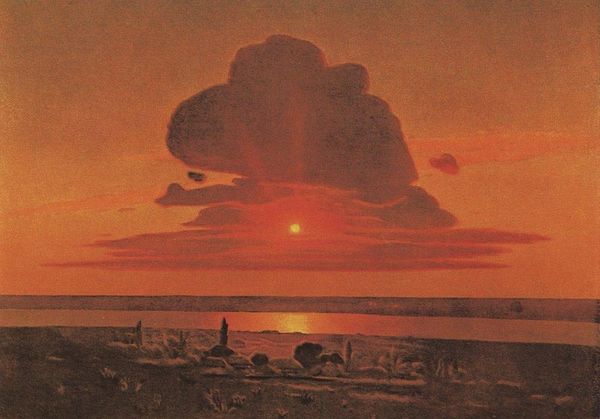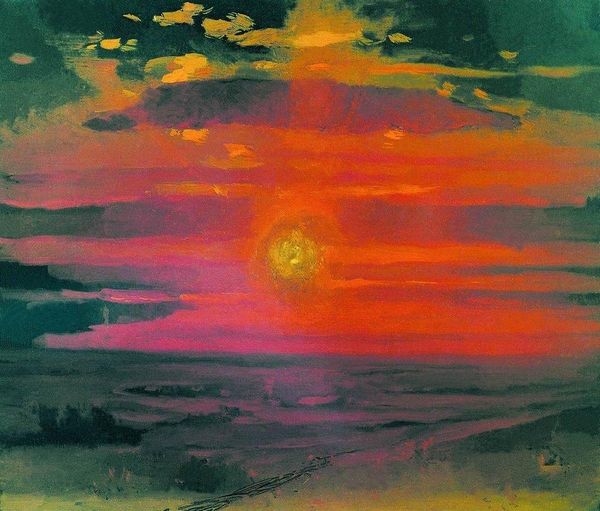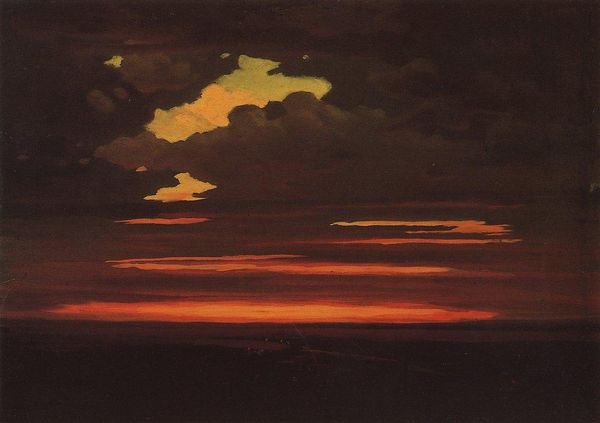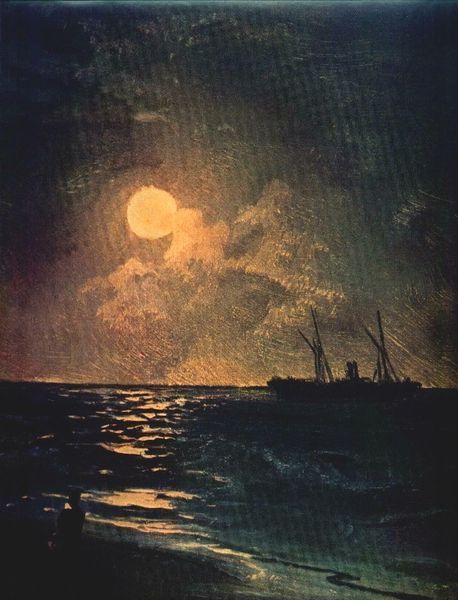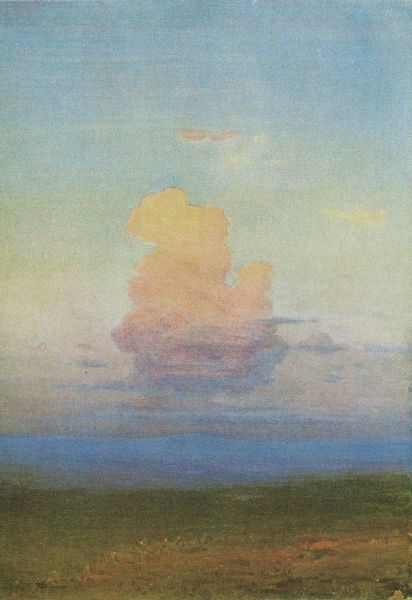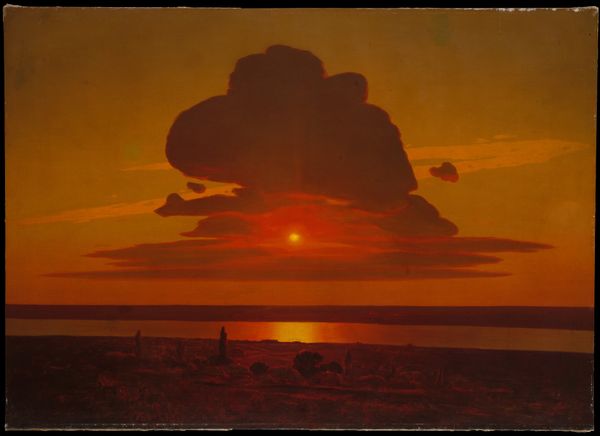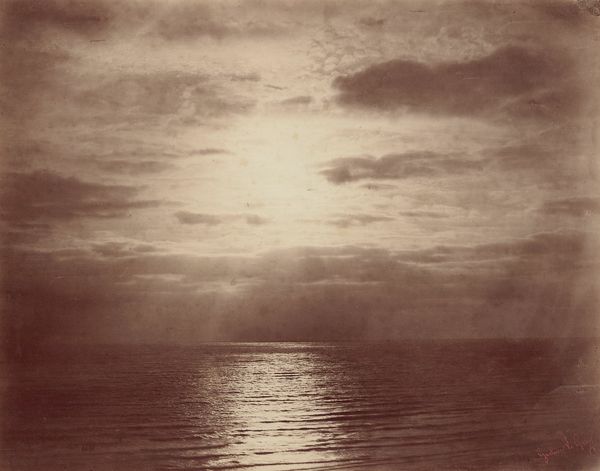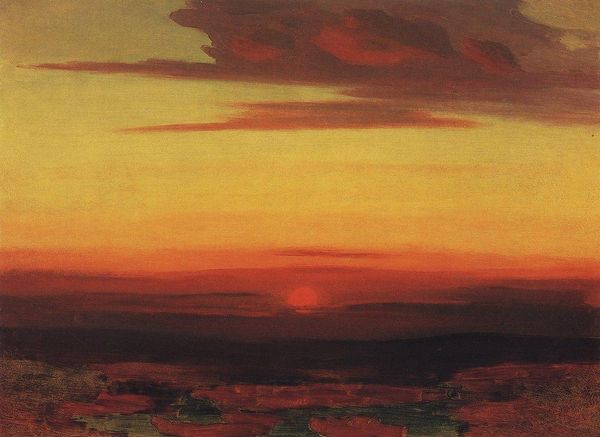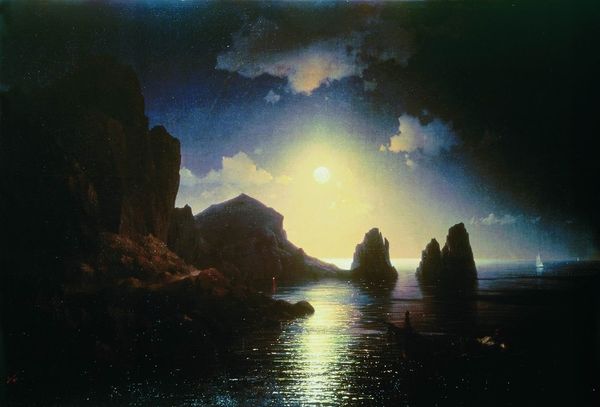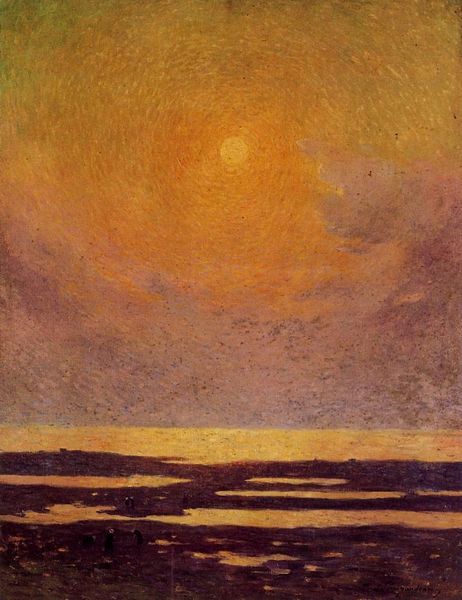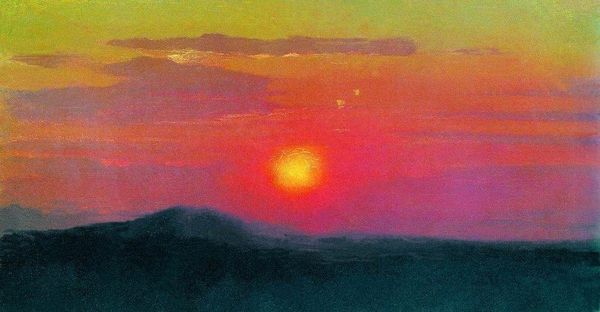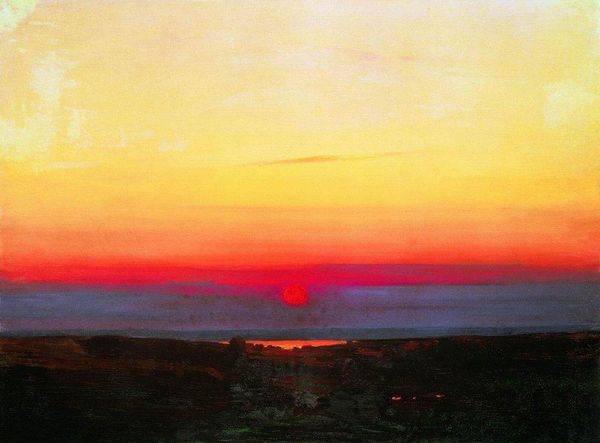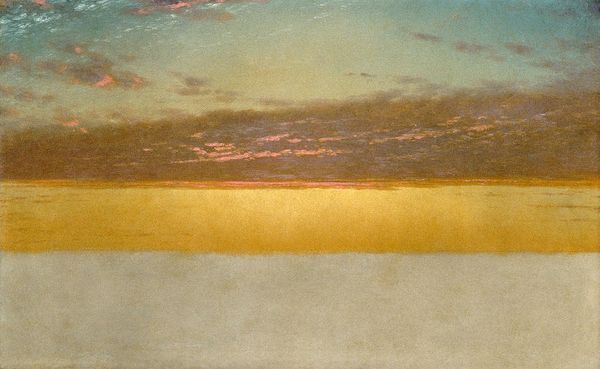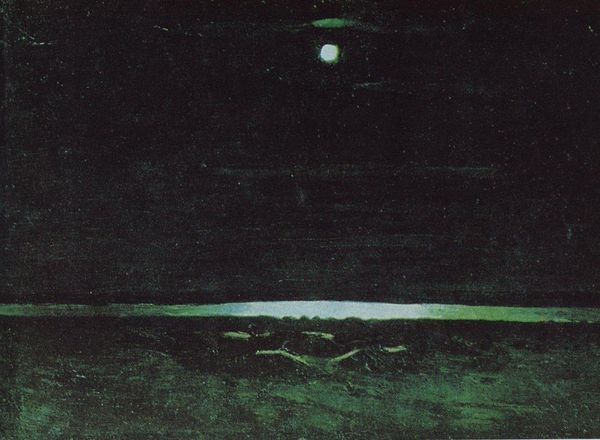
Copyright: Public domain
Editor: We're looking at "Red Sunset," an oil painting from 1908 by Arkhyp Kuindzhi. The overwhelming impression is one of tension, a sort of quiet drama unfolding in the sky. How do you interpret this work, especially given its historical context? Curator: What I see is a potent expression of Romanticism intertwined with the rise of the Russian avant-garde, a movement deeply engaged with social and political upheaval. Think about it: what does a vibrant sunset, almost violently red, communicate at the dawn of a century marked by revolution and rapid industrialization? Does this dramatic landscape become a symbolic space reflecting both the beauty and the potential brutality of change? Editor: So you see this not just as a pretty picture, but as a reflection of the anxieties of the time? Curator: Precisely. Kuindzhi lived in a society grappling with identity, class, and power. The striking, almost theatrical light feels defiant, perhaps even a call to attention amidst the societal darkness. Consider also the racial and ethnic tensions brewing within the Russian Empire at this time; do you see the intensity of the light and dark as reflecting these binaries, demanding a reckoning? Editor: That's a really interesting perspective. I hadn't considered the painting as engaging with those political elements so explicitly, but that adds a whole layer of depth. Curator: It requires us to challenge what we consider merely ‘aesthetic’ and to view artworks as active participants in societal conversations, especially during transformative eras. Can a landscape also serve as protest? Editor: I guess it can. Now I see how relevant this painting really is today; the visual power certainly makes more sense in context. Thanks! Curator: Indeed, a landscape is never *just* a landscape.
Comments
No comments
Be the first to comment and join the conversation on the ultimate creative platform.
